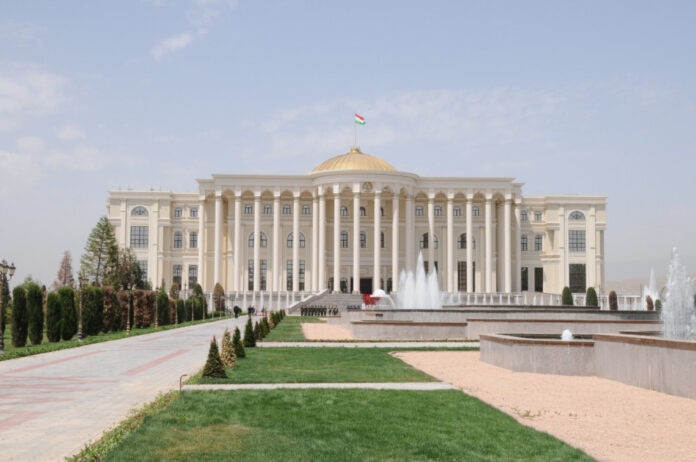By Raza Syed
Tajikistan is a country in Central Asia that boasts of spectacular natural beauty and rich historical heritage. It has a temperate climate that allows visitors to enjoy the views of snow-covered peaks, lush valleys, cascading waterfalls, and majestic glaciers. The meltwater from these glaciers feeds the rivers that flow across Central Asia, creating a vital source of life. Tajikistan’s landscape is diverse and stunning, with towering mountain ranges, fertile cotton fields, and colorful gardens. Some of the most popular tourist attractions are Alexander Kill Lake and Pearl of Fen Martin, which are renowned for their unique meadows and lakes.

Tajikistan is also a country with a long and fascinating history. The Tajiks are descendants of the ancient Aryan tribes, Bactrians, and Sogdians, who settled in this region thousands of years ago. They witnessed the passage of Alexander the Great, who left behind many traces of his presence. The Tajiks formed a unified nation in the fourth or fifth century AD, adopting a common religion and language. They composed poems in the Dari language, which is still spoken today. The Tajiks inhabited the southern parts of Central Asia, including Khorasan (now Iran), Afghanistan, and Kazakhstan. The old cities of Bukhara and Samarkand (now in Uzbekistan) are reminders of the former state of Samand and the advanced culture of the Tajik people.

The Republic of Tajikistan is comparable to Spain, Italy, and Japan in terms of altitude. According to the United Nations, the estimated population of Tajikistan in 2023 is 10 million people and a border length of 3,000 km. It shares borders with Afghanistan, China, Kyrgyzstan, and Uzbekistan. The Pamirs and Three Shans are the highest mountain ranges in Tajikistan, extending to other Central Asian regions. The Pamir Range is especially remarkable, as it is where the Kairakum, Kuangin, and Hindu Kush ranges converge, forming the largest glacier outside the polar regions.
Tajikistan, located in Central Asia, is a country of stunning natural beauty. Half of the region is covered in snow, and the country is home to an impressive network of glaciers that stretch across 8,500 km. The country is also rich in valuable resources, including oil, coal, and mineral water reserves. Tajikistan is renowned for its sanatoriums and health resorts, which have gained global recognition. The country’s lush pistachio and cherry orchards thrive, contributing to Tajikistan’s primary export of dried fruits.

Approximately 10% of the Tajik population resides in the mountainous regions, characterized by tall and slender individuals. A staggering 93% of the country’s territory is enveloped by majestic mountain ranges, often tranquil but occasionally disrupted by avalanches that affect local livelihoods.
In recent years, modern architecture has emerged, transforming historic cities. Dushanbe, the capital and a major industrial center with a population of 1.2 million, stands as a testament to this change. The city of Kiroqum is renowned for its expertise in carpet weaving, and these sought-after products are cherished throughout the nation.
Tajikistan’s advancements in hydropower technology have been transformative, providing electricity to a significant portion of the population for over two decades. The Tajik aluminum plant and other industries benefit from this abundant energy supply. Notably, Tajikistan remains one of the few countries actively constructing hydroelectric power stations.

Beyond its energy resources, Tajikistan is blessed with extensive mineral wealth, including reserves of oil, minerals, and energy sufficient to meet both domestic needs and support export activities. Approximately 400 deposits have been identified, with ongoing efforts to discover an additional 100. Among the 40 different types of minerals found, coal, granite, marble, copper, silver, gold, lead, zinc, and abundant natural gases and healthy water sources are some of the most notable ones.

Tajikistan is home to 30 universities and approximately 50 technical schools and colleges. Thousands of students from Tajik Technical University are serving the country as civil electrical engineers, while many students of University of Technology are pursuing advanced technology education in different countries. Currently, 90 thousand teachers are teaching 3 hundered thousand students in the country. Tajikistan is inhabited by Uzbeks, Russians, Kyrgyz, Ukrainians, and many other nationalities along with Tajiks. All these mixed nations are playing an important role in the construction and development of Tajikistan.

Tajikistan is also famous for its rich cultural heritage. The country has a Russian Drama Theater in Dushanbe where various interesting plays written by Tajik and Western authors are performed. UNESCO has added Tajikistan’s famous classical music Shashmaqom to the World Musical Masterpiece Heritage. Firdavsi Library is the oldest library in the country, holding millions of ancient and modern books, manuscripts, and Tajik encyclopedias. Tajikistan has a presidential system of government under the modern constitution. The president is the head of the government and the Muslim forces.First election of the President was held in 1994 and last one was in 2020. On November 6, 1994, HE Mr. Emomali Rahmon was elected as the President of the Republic of Tajikistan for 7 years through nationwide democratic elections. The Parliament is the supreme and legislative body, consisting of two chambers. The term of the members of the Lower House and the Upper House of Parliament is for 5 years.

Despite the challenges caused by civil war, the HE Mr. Emomali Rahmon has made significant progress in enhancing political stability.

Tajikistan has maintained stable and long-standing Trade, cultural, and political relations with Great Britain. The country’s foreign policy is focused on promoting equal human rights, establishing strong relations with other countries, and contributing to international peace and security. Tajikistan is keen on promoting economic cooperation with Central Asian countries and other nations. Construction and economic recovery in Tajikistan are progressing rapidly. The government has implemented reforms in taxation, privatization, and the banking system to support these efforts.The country’s rich cultural heritage and diverse population make it a fascinating place to visit and explore.





